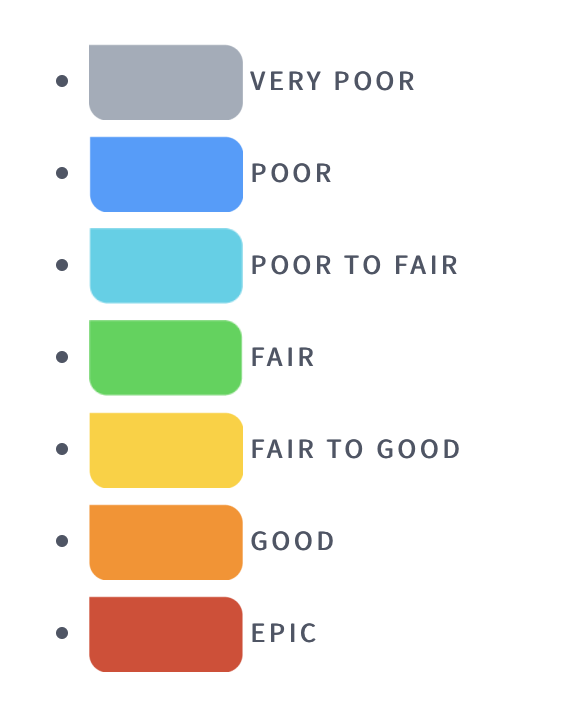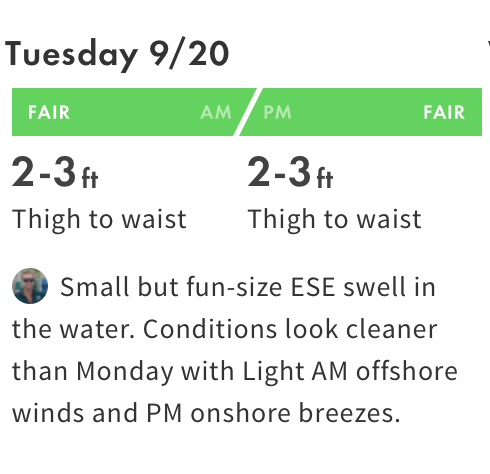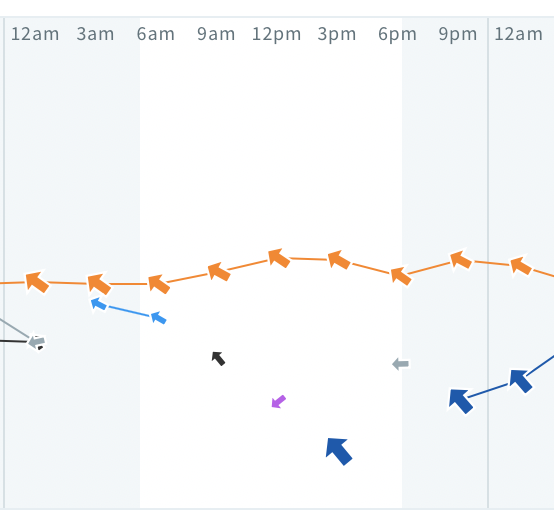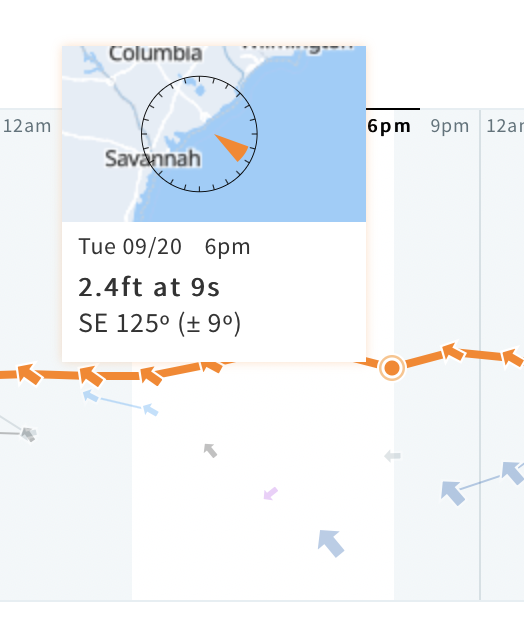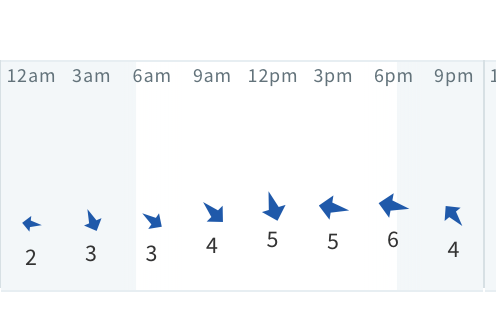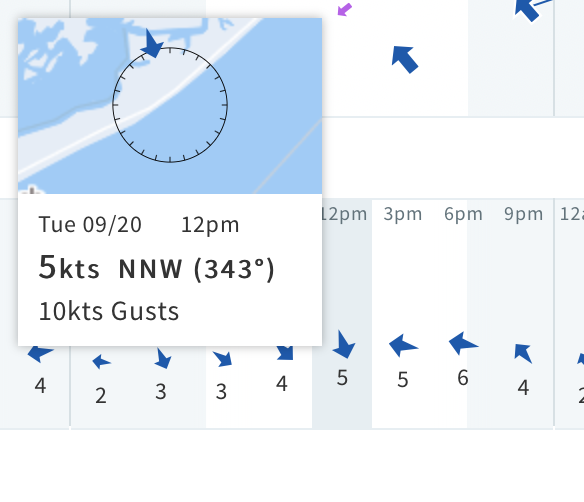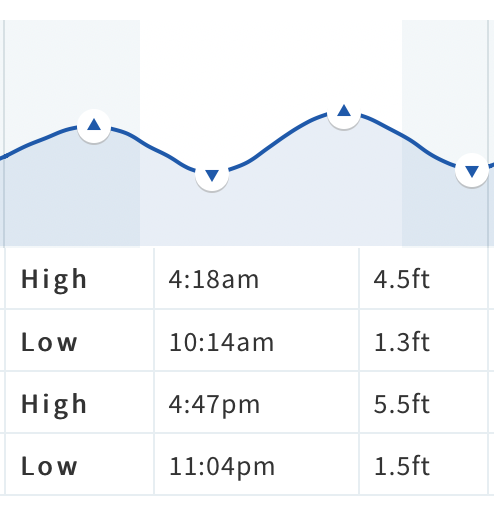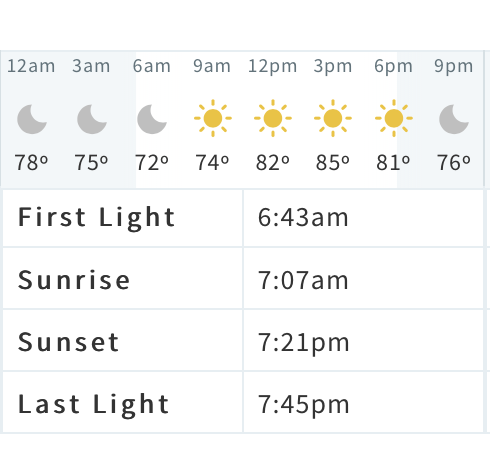Understanding a surf forecast 101: Surfline Edition
Almost everything about surfing is intimidating. Communities seem too tight knit to become a part of, certain boards seem way too difficult to ride, some waves look too scary to ride, and deciphering a surf forecast seems reserved for wicked smart folks. But the more time you spend immersing yourself in surfing and the ocean, the more you realize it isn’t that scary. This may be the longest guide we have written, but we hope you find it helpful.
Today we will breakdown a daily surf forecast for Folly Beach. This is the desktop version of Surfline. This is just an intro, but it will be a great foundation to understand what is happening day to day surf wise in the Charleston area. If you do not have a Surfline Premium account, Magicseaweed or Swellinfo could be good options and we can always do a intro to those platforms as well. Let’s jump in!
First, find Folly Beach on the site and click “Regional Forecast”. You will see the display we have below. This will give you a fairly accurate macro view for the next 3-7 days. Depending on the system generating the waves, everything is subject to some pretty big changes and nothing is set in stone. We tend to look at the 5 day forecast for Folly Beach and base our lesson schedule around that. Once you have an idea of what the week ahead holds, you can hone in on a day or two that interests you.
We want to look at 9/20. The first thing you will see is a colored rating bar for “AM” and “PM”. In this case Surfline is calling for “Fair” conditions for both halves of the day. What does “Fair” mean? Surfline uses a colored rating system from the worst, “Very Poor” (gray) ,to “Epic” (red), as good as it gets. In between the worst and the best a beach can get are five other ratings. Because we live in Charleston, we primarily see “Poor” and “Poor to Fair” conditions. We do have our share of “Fair” days as well, but “Fair to Good” and “Good” are quite rare and “Epic” is very very rare and would require all conditions from a Hurricane coming together for Folly Beach for that to be warranted. We recommend looking out for “Poor too Fair” and “Fair” days. That is the bulk of fun surfing days you will have in the Charleston area.
So below our AM and PM rating we will have wave size in both feet and height in comparison to a human body. The measuring of waves will forever be one of the funnier parts of surfing. Two people will describe the same morning of waves as thigh high and six foot. People tend to exaggerate and we find it’s better to downplay size. No one likes to hear its head high only to find out its stomach at best. You’ll have to make your own judgment, but a 2-3 or thigh to waist high day is a super fun day for Folly. 1-2 feet is totally surfable and fun, but thigh to waist is the bread and butter for the majority of surfers and very user friendly in our region.
Below the wave height we will have a brief description from Surfline’s southeast regional forecaster giving us the rundown of what is to be expected. While this may be all you need to make the call on skipping work or telling the family it’s a beach day, you would be best served by continuing to sift through the information below to have a better understanding of what the day will hold.
Now that we’ve covered the basic description of what the waves and wind are expected to do on Tuesday, let’s take a deeper look into the swell, wind, and tide and their respective directions and speeds.
First up, the swell. There’s no surfing without the swell so that’s always our most important ingredient. You will see a section with the time displayed from 12am to 12am. The white or lighter part of the display represents the hours in the day we can surf due to light. Within this display we have one clear orange line with arrows on it. Other than that we have random arrows with varying sizes and direction. What does all this mean? At first glance how are you supposed to get any info from this. Each line of arrows or in this case random one off arrows represents different underlying swells. Wait, there’s more than one swell per day? Yes, you will more than likely always have multiple swells on any given day; however, we are looking for the most dominant and organized. In this case, that is the orange line with arrows. Due to how disorganized and random the other swells are, they are not really relevant in this case. If there were other more organized swell lines than we may have a “combo swell” situation where we have several different swells that could combine to create potential very fun conditions on our beaches, but for Tuesday we only need to focus on the one dominate swell.
Take your mouse and hover it over the orange line. By doing this you will be able to see a small map clearly showing the direction of the swell. We can see it’s pointed towards our coastline. This is good because it means our beaches will pick it up. What if the orange arrow was parallel with our coastline? This would mean our beaches would miss most of the swell and it would head straight to North Florida. This would not be good. You can see it says 2.4ft at 9s. 2.4ft is the swell height and the 9s means “9 seconds” which is the period/interval or the distance between waves. This data will come from a network of buoys off the South Carolina coastline that are reading ocean conditions. The lower the number of seconds the period is the weaker and more disorganized the swell and waves will be when they break on Folly. The higher the number of seconds the period is the more organized and stronger the swell will be. But be careful, would 22 seconds be good? Absolutely not, it would be way too powerful for our beach breaks and would result in closeouts or waves that are not rideable. For these longer period swell events you would need some sort of structure. By that we mean a reef, a point, or even an inlet or a jetty to break the swell up. For our Folly Beach case study, we would say that anything from 7 seconds to 11 seconds is our sweet spot. Below our wave height and period we have SE 125 Degrees. This is telling us that the swell is coming from the southeast which we can see from our orange arrow on the map. This specific south east swell direction would directly correlate with 125 degrees on the map. Don’t get too hung up on the degrees, just worry about the direction in terms of north, south, and east, and west. For Folly Beach we ideally want a swell from the SE, but straight south works, east works, and even though N and NE swell is not ideal for the direction our beaches face, if it is a big enough swell from a No’easter for example we will still get some waves, but it will be drifty and will lack the shape we want.
Up next in our list of ingredients is wind. While swell is the obvious starting point, the wind can really make or break your day. A perfect swell means nothing if your winds are horrendous. What do we mean by horrendous? Well, you basically have two variables. Wind speed and wind direction. If you have a bad wind direction (onshore or cross shore) it may not be ideal, but as long as the wind speeds are low, you’ll be just fine. However, if you have cross shore or onshore winds at a high speed of let say 15-20 mph, it will drastically decrease the quality of the waves even if the swell size, period, and direction are perfect. We need the wind and swell to cooperate to have a really good day come together. So below you will see the same display we had for the swell; however, for the wind we have individual arrows with varying sizes and directions. The smaller the arrow the lighter the wind and the direction of the arrow shows you which the direction the wind is blowing in. You can see we have very light winds for the whole day. Does this mean the entire day is going to be glassy and perfect? Not necessarily. Let’s take a look by hovering out mouse on the arrows. You can see that at 12pm the wind is 5kts out of the NNW. This is almost perfect for Folly Beach surfing. The wind is coming from off the coast which will create groomed and cleaned conditions and whats even better, it is very light. If that offshore wind were to clock in around 20kts you would run into the problem of difficult entries into waves for beginners due to the wind blowing surfers out of the waves and it would also beat down the swell quickly and it would be a short-lived event. With the wind being light offshore, the swell is not in jeopardy of dying out rapidly. If you scroll your mouse from 6am to 6pm, you will see the wind is light offshore and then suddenly at 3pm the arrow pointing off the beach clocks all the way around and points towards the beach. What does that mean? Well, this means the wind that held offshore consistently for the majority of the day is going to swing around and turn onshore. This will create more texture in the ocean and will decrease the quality. Now that we know this, it’s clear we need to target before 3pm. 6am to 3pm is a lot of time, do I just randomly pick a time to go down to the beach? No, our last ingredient to this swell will be the key to picking your few hour window to surf if you aren’t able to be at the beach all day.
Let’s talk tide. The tides are so crucial to surfing in Charleston. Jump the gun and surf dead low and you will find the swell seems way smaller than expected and it is mostly closet outs. The lack of water will pull energy away from the swell and will also mean the waves will be breaking poorly in very shallow water. Surf the dead high tide (especially around a full moon) and you may be greeted with very soft and crumbly conditions that are barely rideable. While this is the general idea with the tides on Folly Beach, there are definitely certain portions of the beach and certain swells that can work on dead low or dead high, but that is up to you figure out. Walk or bike the beach as much as you can and try to find certain areas that seem to be better or work better on certain tides. For the sake of this though, we will generalize Folly Beach as a mid to high tide beach break. This means we want to catch an incoming tide from around the 2-3 hour mark to the 4-5 hour mark. As you can see from the tide chart below. Dead low tide is 10:14am. This means that from around 12:30pm to 3:30pm would be ideal tide wise, but if the forecast were to hold 100% accurate you would run into a wind shift around the 3pm mark, which wouldn’t be the end of the world but conditions would certainly deteriorate. The other option would be to surf first light (6:43am) to maybe around 9am. While this would be a dropping tide and not the rising tide we would ideally want, the benefit of doing the early morning would be the safety of catching the cleanest portion of the day with a good level of water on the sand bars. There is always the potential the wind comes up much earlier than 3pm and you kick yourself for missing the perfect thigh high glassy waves of the morning.
Lastly, Surfline provides a nice little display with the weather forecast for the day as well as first and last light and sunrise and sundown. This just helps you plan your surf even better.
In summary, when reading the forecast, you are looking to see what are three main ingredients are doing. Swell, wind, and tide. Our job is to look at the information Surfline provides to see when the swell, wind, and tide all come together to create the optimum window to surf each day. Really good conditions rarely last long and you will often find you miss the best window, but the more you read into each swell and do your best to pick out the best three hour windows the better you will get and one day you will find yourself getting the best window of the swell. Understanding a Surfline forecast is applicable to any region and beach in the world, but be sure to understand the specific tides and likings of the beach you want to surf. Every beach likes different swell direction, wind direction, tides, periods, ect. Good luck and let us know if you found this helpful and would like more guides to understanding surf forecasting. Cheers!

